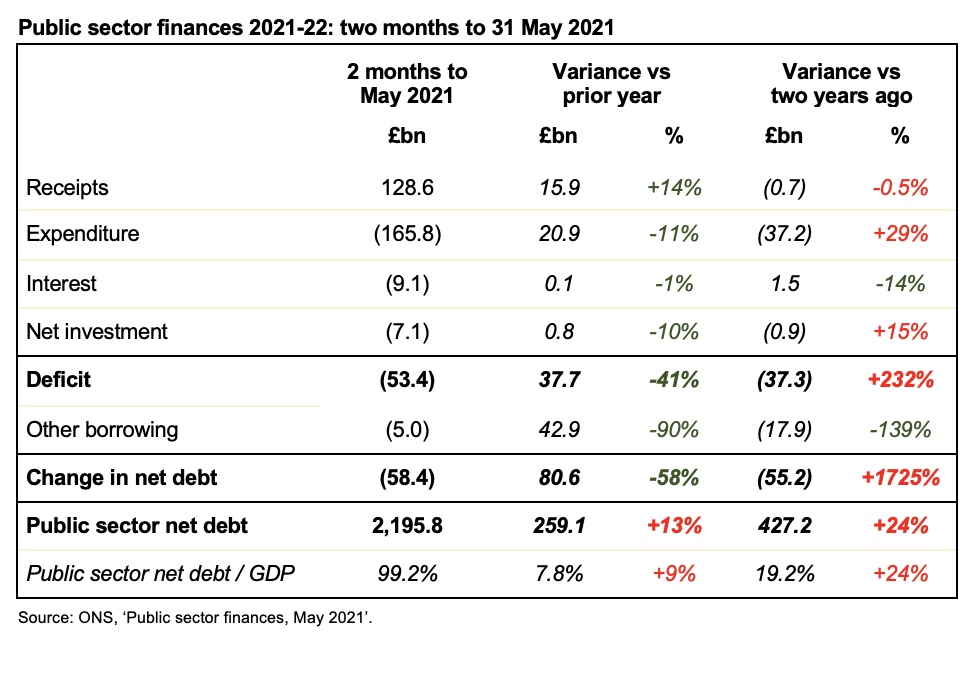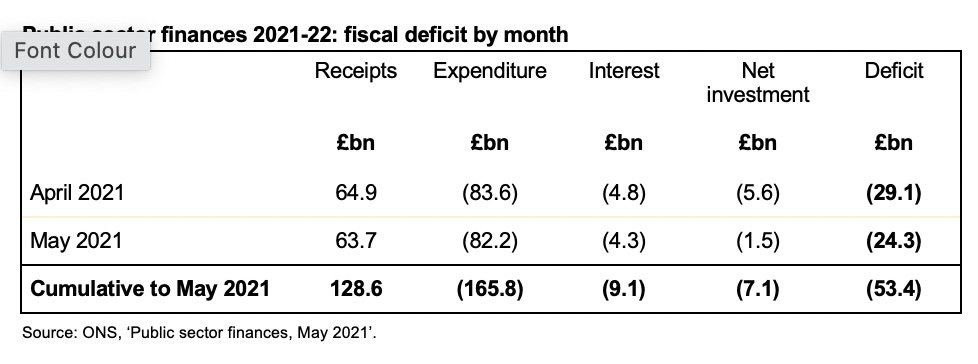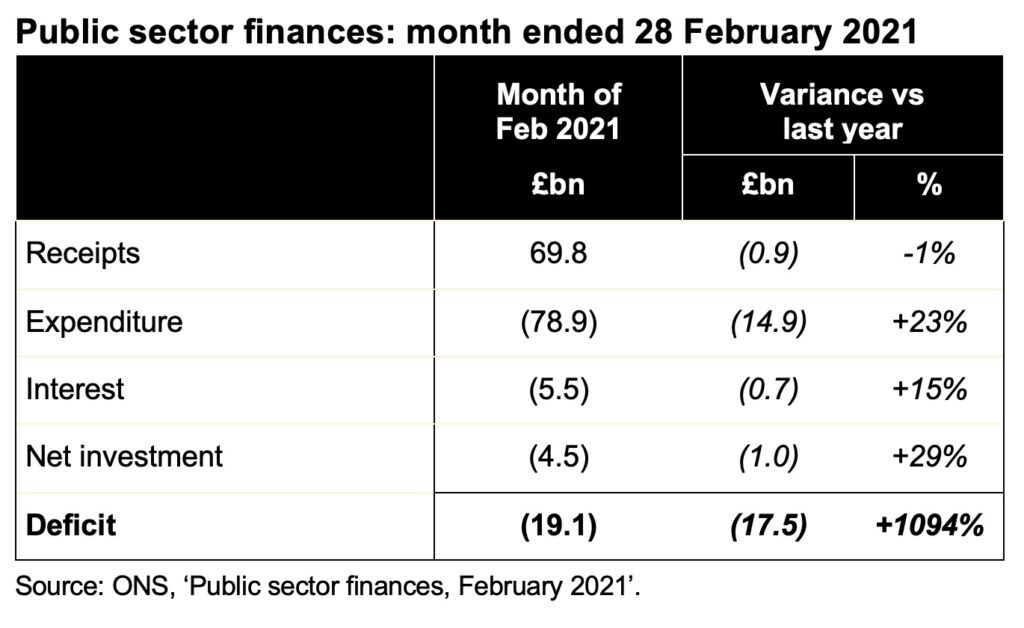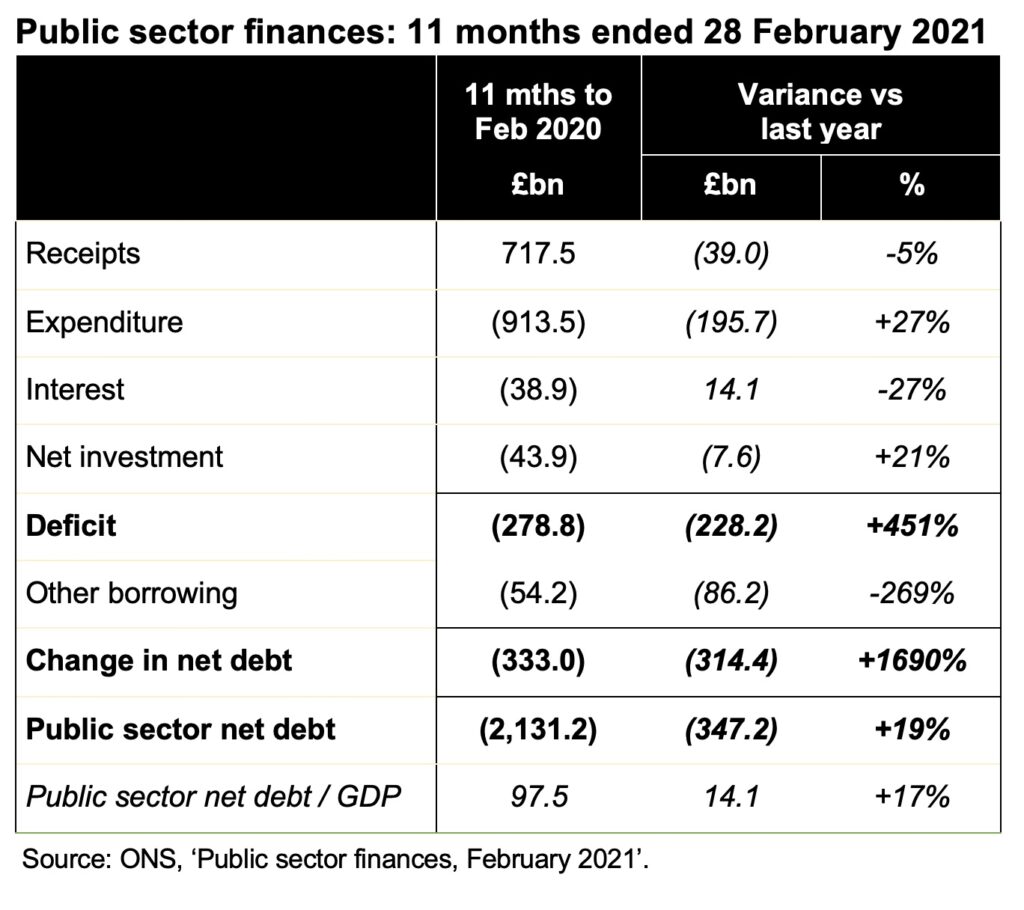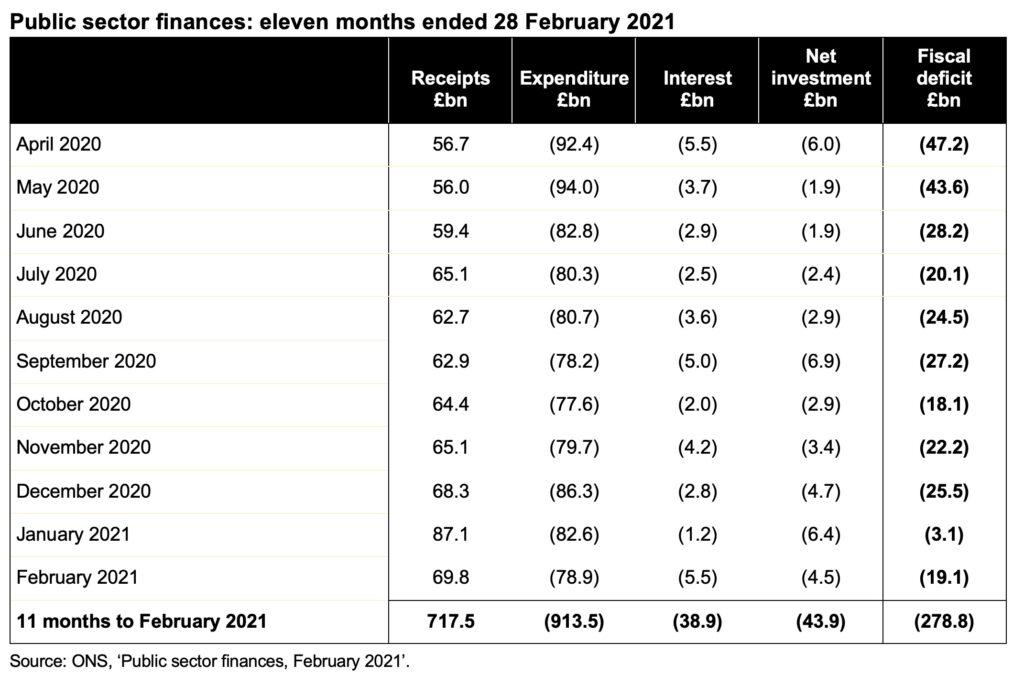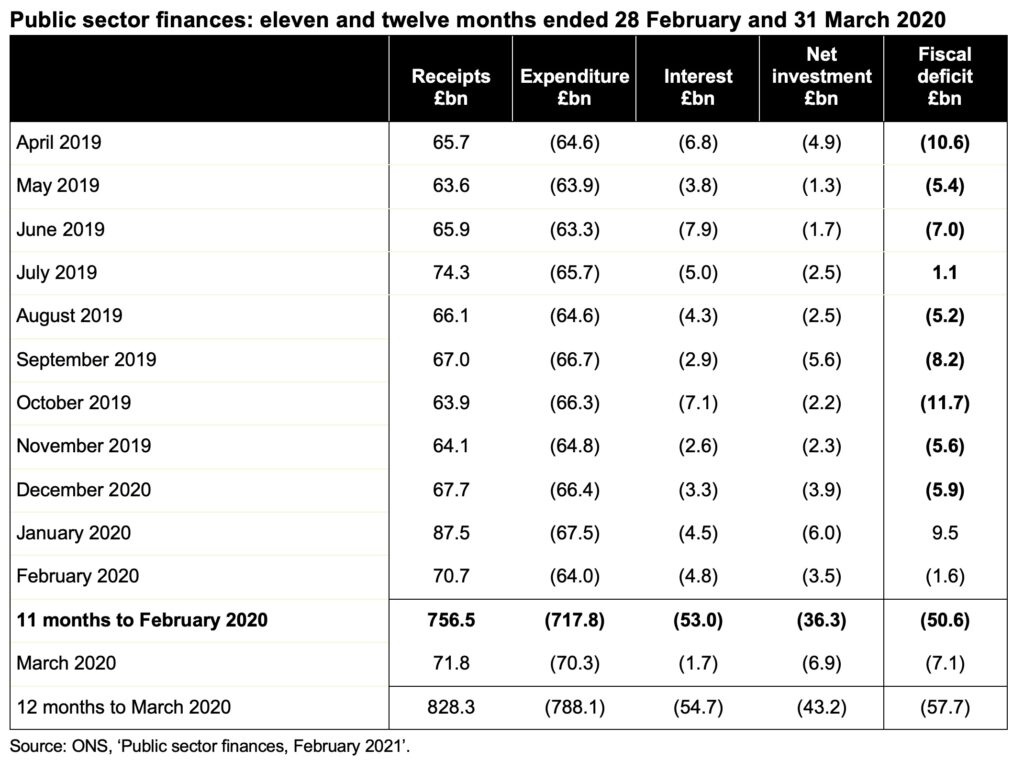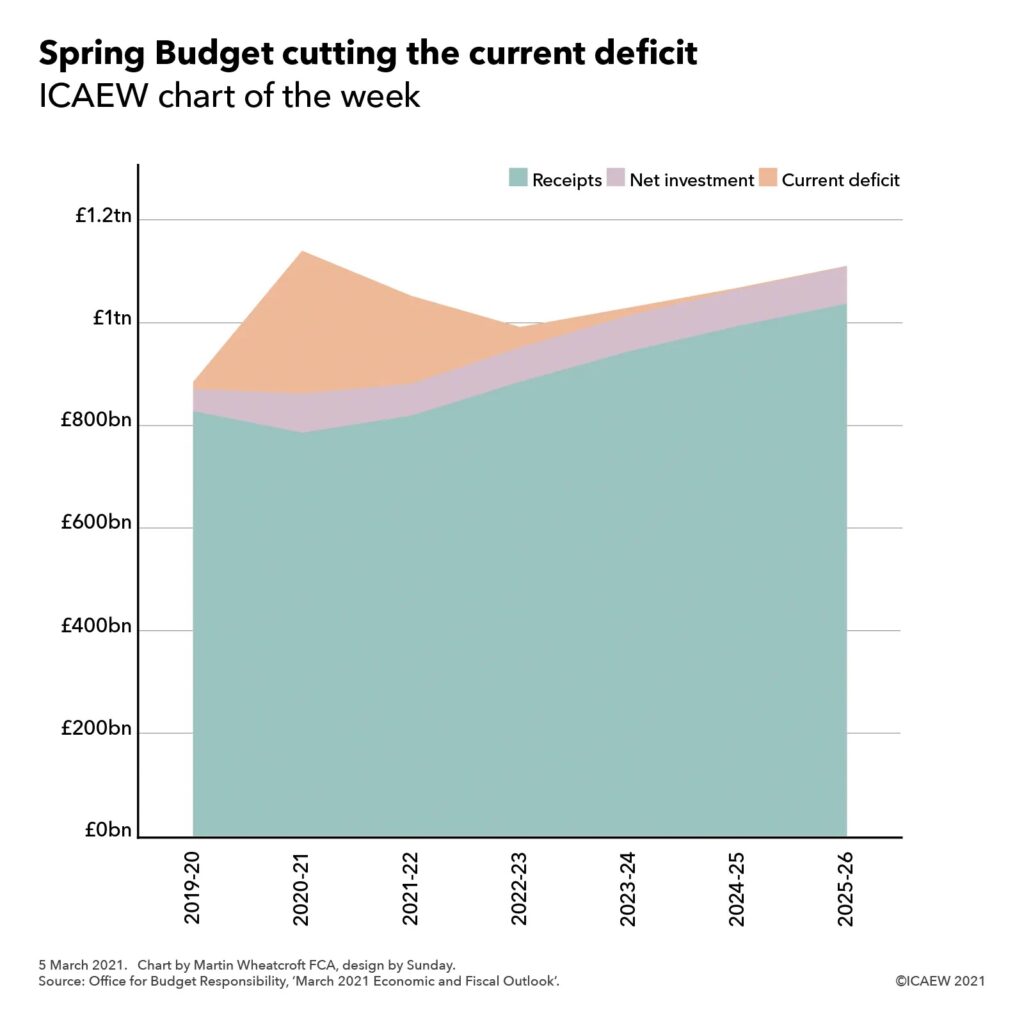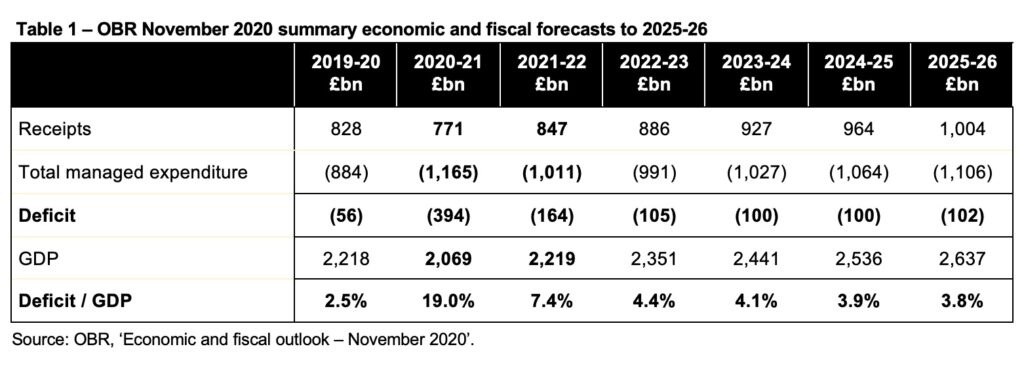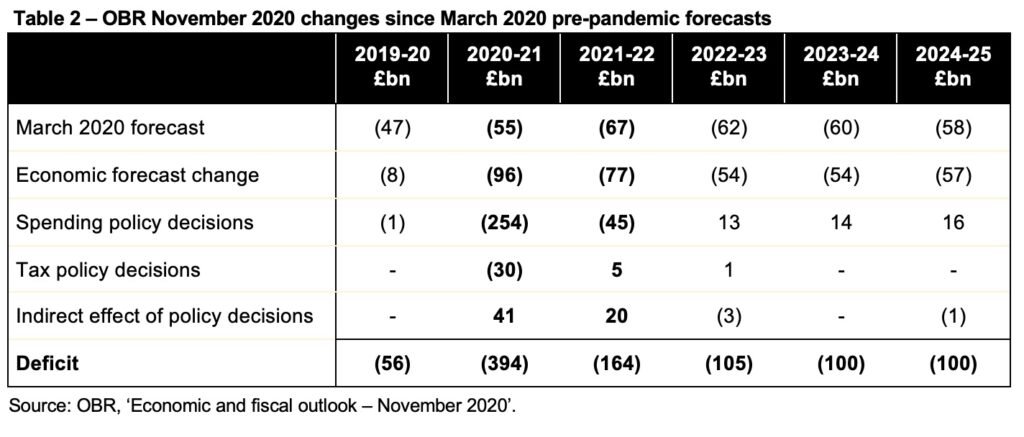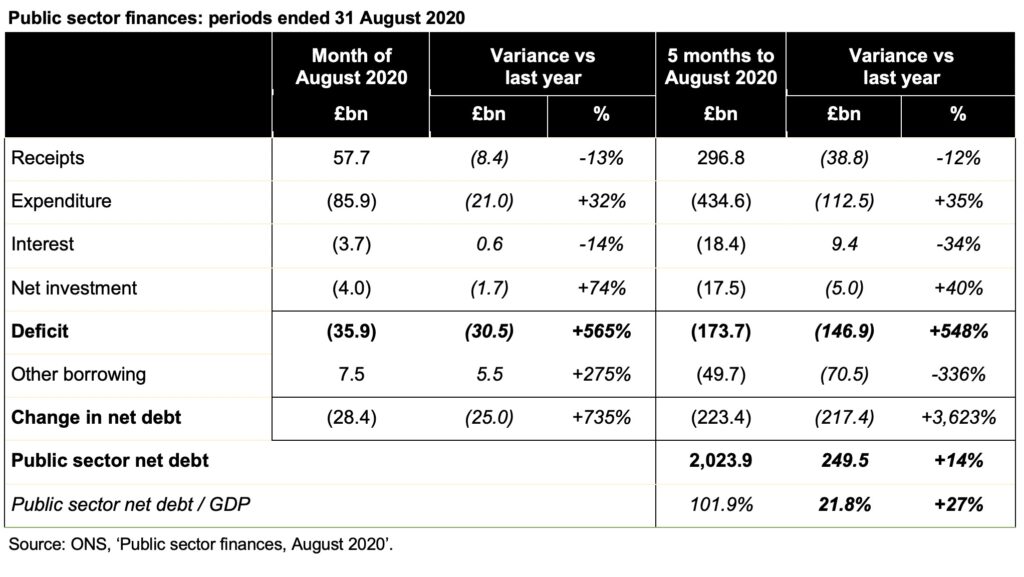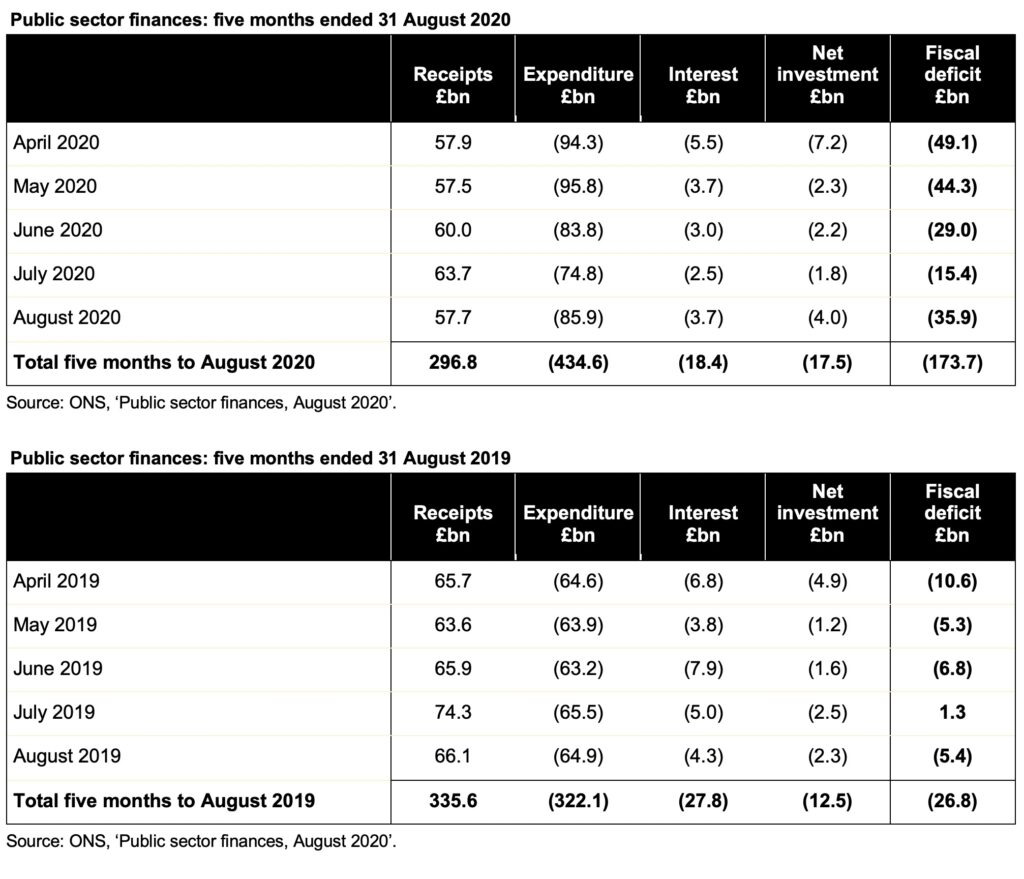A June deficit of £22.8bn resulted in public sector net debt reaching £2,218.2bn or 99.7% of GDP at the end of the first quarter of the 2021-22 fiscal year, fuelling speculation that the Chancellor may delay the Autumn Budget and departmental spending reviews.
The latest public sector finances released on Wednesday 21 July reported a deficit of £22.8bn for June 2021, as COVID-related spending continued to weigh on the public finances, albeit at a reduced rate. This is an improvement from the £28.2bn reported for the same month last year during the first lockdown but was still significantly higher than the £7.0bn reported for June 2019.
Public sector net debt increased to £2,218.2bn or 99.7% of GDP, an increase of £80.8bn since March 2021 and £420.5bn higher than March 2020 just fifteen months ago.
Cumulative receipts in the first three months of the financial year of £201.6bn were £29.5bn or 17% higher than a year previously, but this was only £6.4bn or 3% above the level seen a year before that in the first quarter of 2019-20. At the same time cumulative expenditure of £243.4bn was £26.0bn or 10% lower than the first three months of 2020-21, but £51.6bn or 27% higher than the same period two years ago.
The effect of higher inflation on index-linked gilts drove a jump in interest costs, which at £18.1bn in the quarter to June 2021 were £6.0bn or 50% higher than Q1 in 2020-21, albeit this was still £0.4bn or 2% lower than the quarter ended 30 June 2019 despite much higher levels of debt.
Net public sector investment was slightly lower than last year with £9.6bn invested in the three months to June, down £0.3bn or 3% from a year before but up £1.7bn or 22% from two years ago. This combined to produce a cumulative deficit for the first three months of the 2021-22 financial year of £69.5bn, £49.8bn or 42% below that of the same period a year previously, but up £46.5bn or 202% from the first quarter of the 2019-20 financial year.
Debt movements reflected £11.3bn of additional borrowing over and above the deficit for the quarter, principally to fund coronavirus loans to businesses. Public sector net debt of £2,218.2bn is £245.5bn or 12% higher than a year earlier and £438.2bn or 25% higher than in June 2019.
The Office for National Statistics revised the reported deficit for the year ended 31 March 2020 down by £1.5bn from £299.2bn to £297.7bn, still a peacetime record. The final total is still expected to exceed £300bn as the ONS has yet to include in the order of £27bn of bad debts on COVID-related lending in this number. Estimates will be refined further over the next few months.
Alison Ring, ICAEW Public Sector Director, said: “Public sector net debt has risen by £420bn since the first lockdown in March 2020, making the public finances more vulnerable to changes in interest rates and reducing the fiscal headroom available to the Chancellor as he seeks to navigate the economy out of the pandemic.
“Rumours that Rishi Sunak is considering cutting investment plans and delaying the Budget and departmental Spending Reviews are concerning. It is important that the baby of borrowing sensibly to fund much-needed investment in infrastructure is not thrown out with the bathwater of post-pandemic spending restraint.
“Central and local government desperately need budget certainty so they can plan, even if there are some adjustments next year when we all hope the pandemic will have run its course. The last full Spending Review was in 2015; it’s important that we end the cycle of deferral and delay and restore financial discipline to the government’s budgeting.”
Public sector finances 2021-22: three months to 30 June 2021
| 3 months to June 2021 | Variance vs prior year | Variance vs two years ago | |||
| £bn | £bn | % | £bn | % | |
| Receipts | 201.6 | 29.5 | +17% | 6.4 | +3% |
| Expenditure | (243.4) | 26.0 | -10% | (51.6) | +27% |
| Interest | (18.1) | (6.0) | +50% | 0.4 | -2% |
| Net investment | (9.6) | 0.3 | -3% | (1.7) | +22% |
| Deficit | (69.5) | 49.8 | -42% | (46.5) | +202% |
| Other borrowing | (11.3) | 44.4 | -80% | (19.7) | -235% |
| Change in net debt | (80.8) | 94.2 | -54% | (66.2) | +453% |
| Public sector net debt | 2,218.2 | 245.5 | +12% | 438.2 | +25% |
| Public sector net debt / GDP | 99.7% | 6.3% | +7% | 19.4% | +24% |
Public sector finances 2021-22: fiscal deficit by month
Receipts | Expend- iture | Interest | Net investment | Deficit | |
| £bn | £bn | £bn | £bn | £bn | |
| April 2021 | 66.2 | (82.3) | (4.8) | (5.2) | (26.1) |
| May 2021 | 66.3 | (80.8) | (4.5) | (1.6) | (20.6) |
| June 2021 | 69.1 | (80.3) | (8.8) | (2.8) | (22.7) |
| Cumulative to June 2021 | 201.6 | (243.4) | (18.1) | (9.6) | (69.5) |
Caution is needed with respect to the numbers published by the ONS, which are expected to be repeatedly revised as estimates are refined and gaps in the underlying data are filled.
The ONS made a number of revisions to prior month and prior year fiscal numbers to reflect revisions to estimates. These had the effect of reducing the reported fiscal deficit for April 2021 from £29.1bn to £26.1bn, for May 2021 from £24.3bn to £20.6bn and for the twelve months ended 31 March 2021 from £299.2bn to £297.7bn.
For further information, read the public sector finances release for June 2021.
